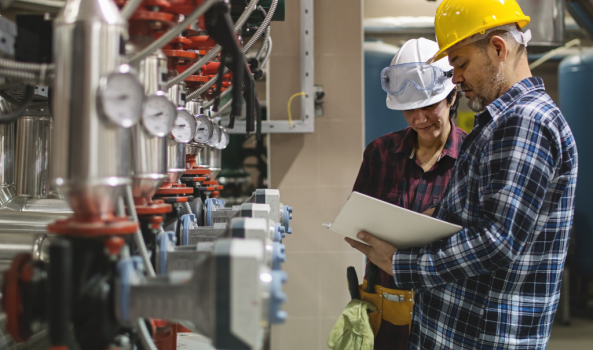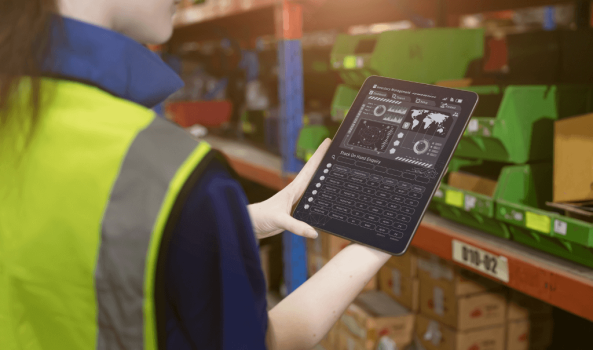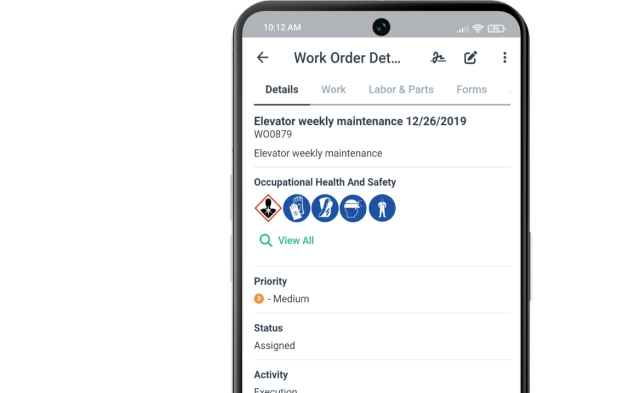Get a Free WorkTrek Demo
Let's show you how WorkTrek can help you optimize your maintenance operation.
Try for freeKey Takeaways
- High initial costs are the top barrier for 34% of organizations, but starting with pilot programs on critical assets can demonstrate ROI quickly
- 95% of predictive maintenance adopters report positive ROI, with 27% achieving payback in less than a year
- Unplanned downtime costs average $260,000 per hour, making the investment in predictive maintenance technology worthwhile
- Starting with a CMMS platform provides a cost-effective foundation for building predictive maintenance capabilities over time
Let’s address the elephant in the room: implementing predictive maintenance isn’t as straightforward as many would have you believe.
While the promise of reduced downtime and lower maintenance costs is compelling, the path can be rocky.
Those who go down the path are seeing the fruits of their labor. According to recent research from IoT Analytics, 95% of predictive maintenance adopters reported a positive ROI, with 27% of these reporting amortization in less than a year.
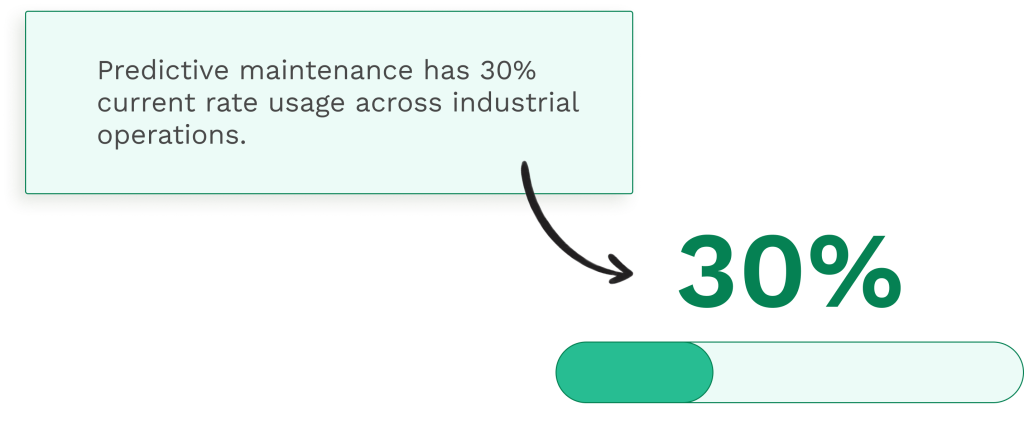
Yet, despite the data, organizations still struggle with their predictive maintenance strategy.
Understanding these challenges and knowing how to overcome them is key to implementing a successful predictive maintenance strategy.
Challenge 1: High Initial Investment Costs
The sticker shock of implementing predictive maintenance can stop many organizations in their tracks.
Based on our experience with existing clients, predictive maintenance can be expensive.
What are some of the typical costs? Usually includes installing sensors, integrating advanced analytics software, and upgrading existing infrastructure.
Since many manufacturing maintenance organizations operate on a tight margin, the upfront investment can be challenging.
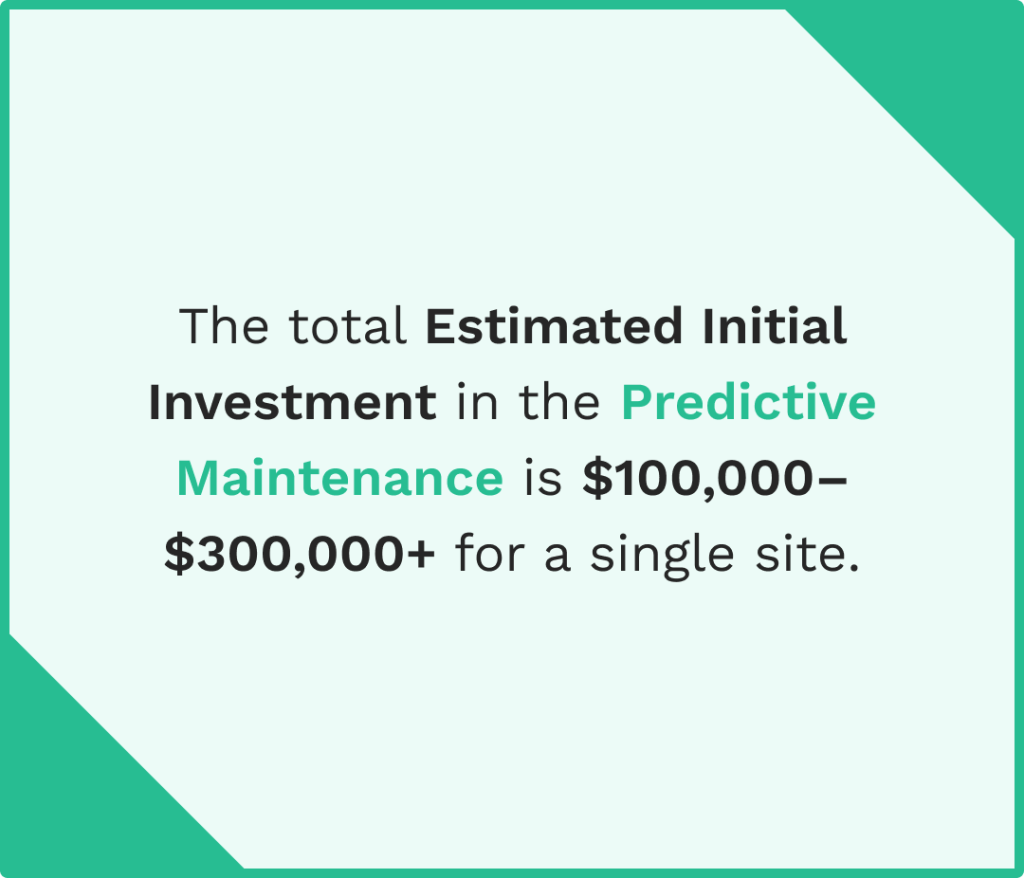
Consider what a typical predictive maintenance implementation requires:
- IoT sensors and monitoring equipment for critical assets
- Data transmission infrastructure
- Analytics software and platforms
- System integration with existing CMMS or ERP systems
- Staff training and potentially new hires with specialized skills
Based on a recent study, the manufacturing sector alone accounted for nearly 30% of the market share. This makes it the most dominant vertical in which predictive maintenance systems are used.
This dominance exists because larger manufacturing plants can absorb the initial costs by spreading them across several assets.
Path forward for Smaller Organizations
However, there’s a way forward for organizations of all sizes. It is always a good idea to start small with pilot programs on your most critical equipment.
Keep focused on assets where equipment failures would cause the most significant operational disruptions or pose the greatest safety risks.
This approach enables you to demonstrate ROI quickly for the management team before incurring significant expenses.
It is nearly impossible to implement a robust predictive maintenance strategy without a CMMS platform like WorkTrek.
When considering a CMMS platform, make sure that it integrates with IoT sensors and provides the data infrastructure needed for more advanced predictive analytics down the road.
Challenge 2: Data Quality and Integration Issues
The most sophisticated predictive maintenance models and machine learning algorithms in the world are useless without quality, but they’re useless without a large amount of data.
One of the primary challenges in predictive maintenance is accurately analyzing large datasets.
Analyzing data that is inconsistent or incomplete can lead to incorrect predictions. This challenge can become ever more complex when dealing with legacy equipment that wasn’t designed with data collection in mind or lacks sensors.
This common predictive maintenance challenge can manifest itself in several ways:
Incomplete Data
Older equipment may lack sensors. Sometimes, existing sensors may not capture all the necessary parameters for accurate predictions.
For instance, you might have temperature data but lack vibration readings or have pressure measurements without corresponding flow rates.
Data Silos
Information often exists in disconnected systems—maintenance records in one database, operational data in another, and quality metrics in yet another system. Without integration, you’re missing the complete picture needed for accurate failure prediction.
Data Quality
A large part of IoT data could contain errors, gaps, or inconsistencies. Large IoT data can also be noisy, which requires a cleanup process before it can be analyzed.
Sensor drift, calibration issues, and communication failures can all compromise data integrity.
Here are a few things successful organizations do to manage data quality.
- Conduct a data audit
- Implement data governance procedures
- Invest in data integration platforms
- Implement anomaly detection techniques
- Use AI and Machine Learning techniques to help with data normalization
- Retrofit legacy equipment with modern sensors
Challenge 3: Lack of Skilled Personnel
According to a 2025 SFG20 report, only 29% of facility managers believe their technicians are “very prepared”. This is while 45% say they’re “somewhat prepared”, and 26% “not at all prepared” for the technological shift that predictive maintenance requires.
This skills gap is one of the most significant barriers to successful implementation.

Predictive maintenance requires a unique blend of expertise that many organizations struggle to find:
- Data scientists who can develop and refine predictive models
- Data Engineers who can manage large data sets
- IT professionals who can manage the technology infrastructure
- Maintenance technicians who can interpret and act on predictive insights
A lot of traditional maintenance teams are highly skilled in reactive and preventive maintenance. However, they may feel overwhelmed by the technology and data analysis requirements of predictive maintenance.
According to a PwC and Mainnovation 2017 survey, technicians play a key role in predictive maintenance. Based on the research, PdM efforts are involved in 79% of the surveyed facilities.
This requires organizations to invest heavily in training and development.
This includes:
- Technical training on new systems and tools
- Data literacy programs to help staff understand and use analytics
- Cross-functional training to break down silos between maintenance, operations, and IT
Consider partnering with equipment manufacturers or predictive maintenance vendors who can provide specialized training in advanced technologies.
Also, some organizations may find success in hiring consultants or managed service providers to bridge the skills gap.
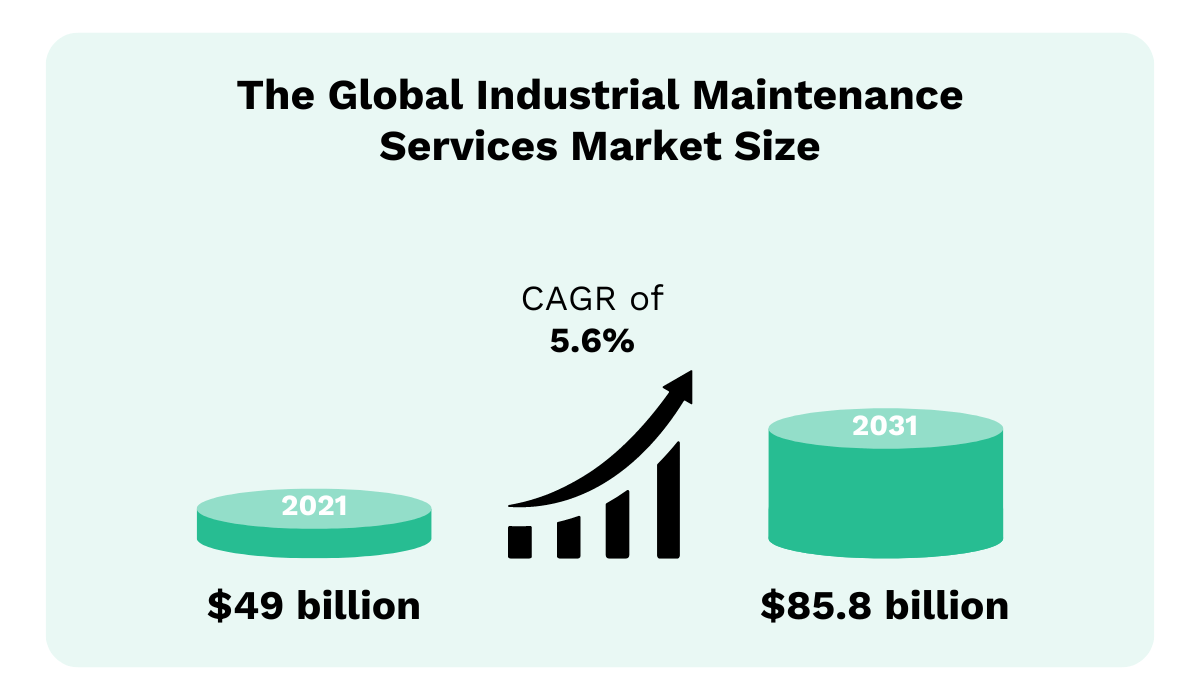
This could be a stopgap measure while the internal team is learning predictive analytics techniques.
Challenge 4: Resistance to Change
Cultural resistance can undermine predictive maintenance initiatives.
Maintenance teams that are already accustomed to time-based preventive maintenance schedules may view predictive maintenance technology as a threat.
Operations teams might also resist the production interruptions required to install sensors or implement new procedures.

Some of the reasons for resistance include:
- Fear that automation will eliminate jobs
- Skepticism about the accuracy of predictive models
- Concern about the increased workload during the transition period
- Distrust of “black box” algorithms in making maintenance decisions
While 95% of predictive maintenance adopters reported a positive ROI, organizations still struggle with adoption because they fail to address the human element of change management.
Below are a few tips on a successful change management strategy:
Involve Teams Early
Include maintenance staff in the planning and implementation process. Their practical knowledge is invaluable for identifying which assets to monitor and what failure modes to track.
Establish Clear Communication

Explain how predictive maintenance will enhance, not replace, human expertise. Emphasize that the technology handles data analysis, freeing technicians to focus on higher-value problem-solving.
Gradual Implementation
Start with pilot projects that demonstrate clear wins and manage expenses. Success stories from within the organization are more convincing than vendor case studies.
Continuous Support
Provide ongoing training and support. Celebrate successes and learn from failures without assigning blame.
Challenge 5: Scalability and Complexity
Scaling from a single equipment to the entire production line can become more complex.
As your organization grows, scaling predictive maintenance solutions can be difficult.
Expanding the system to accommodate additional equipment, locations, or data sources requires careful planning and may involve additional costs.
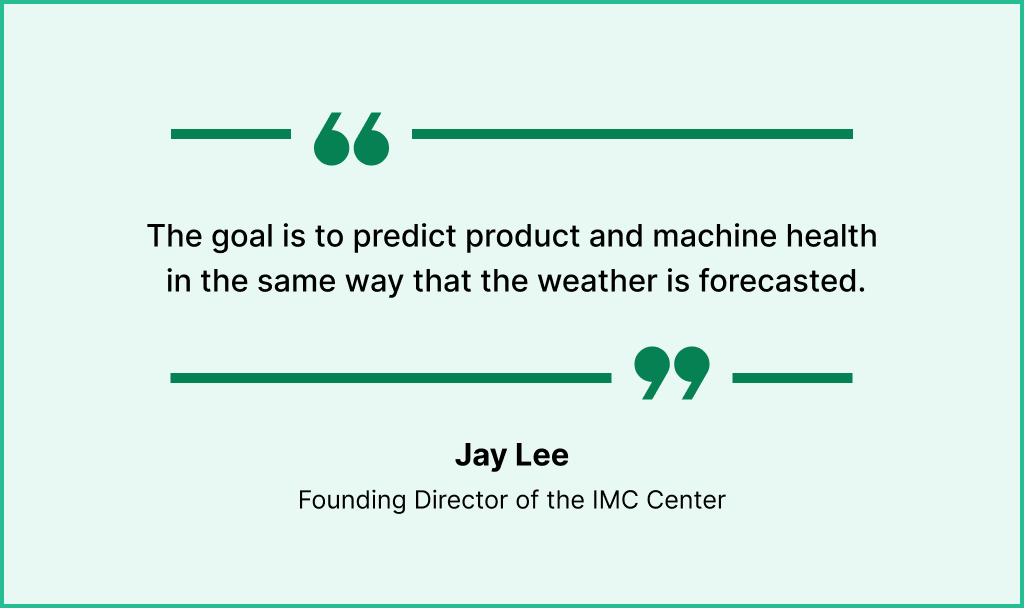
There are several dimensions to this:
Technical Complexity
As you add more assets and sensors, the volume of raw data explodes. Your infrastructure must support the handling of large amounts of data generated by thousands of sensors. It is important to do this without compromising performance.
Organizational Complexity
Facilities can have various types of equipment, different maintenance practices, and distinct organizational structures.
Focus on developing a standardized predictive maintenance program that is effective across diverse operations and applications.
Model Complexity
Each predictive model has to be tailored to the type of equipment. Each equipment type may require its own set of algorithms and failure models, multiplying the analytical workload.
The key to managing complexity is a phased, modular approach:
- Start with standardized equipment types across multiple locations
- Develop a scalable data architecture from the start
- Create reusable predictive models that can be adapted rather than rebuilt
- Establish clear governance structures for managing the expanded program
- Invest in platforms designed for enterprise-scale deployment
Modern asset management systems like WorkTrek provide the foundation for scalable predictive maintenance by centralizing asset data and maintenance workflows across the organization.
Challenge 6: Proving ROI and Gaining Buy-in
Despite compelling industry statistics, many organizations struggle to develop a business case for predictive maintenance that is supported by their management teams.
The PdM market is projected to grow rapidly, from $10.6 billion in 2024 to $47.8 billion by 2029, with a 35.1% annual growth rate. Yet individual organizations often find it challenging to quantify the specific benefits they’ll receive.
The ROI challenge has several aspects:
Intangible Benefits
While reduced downtime and lower maintenance costs are measurable benefits, others, such as improved safety, better product quality, and enhanced customer satisfaction, are harder to quantify.
Long-term Payback
According to a white paper by Deloitte, predictive maintenance can reduce maintenance costs by up to 25% and reduce unplanned downtime by up to 50%.
However, these benefits may take years to fully materialize, making it difficult to justify investment based solely on quarterly financial metrics.
Attribution Challenges
Sometimes when equipment hums and doesn’t fail, it’s hard to prove that predictive maintenance prevented the failure.
Like the old saying, ‘no news is good news,’ success often appears to be nothing happening, which doesn’t make for compelling executive presentations.
How do you build a strong business case?
- Focus on your most critical assets where failures have documented costs
- Use industry benchmarks but adjust for your specific context
- Track leading indicators like mean time between failures (MTBF) and schedule compliance
- Document near-misses and prevented failures
- Create dashboards and customized reports that show trends over time
- Calculate both hard savings (reduced parts, labor) and soft savings (avoided downtime)
Remember that the average ROI for predictive maintenance projects is 10:1, but this requires patience and commitment.
Challenge 7: Cybersecurity and Data Privacy Concerns
With the increase in connected systems, organizations are now more exposed to cyber threats.
According to a study, 89% of companies are worried about data security and privacy when implementing predictive maintenance systems.
These concerns are well-founded, since industrial control systems have become prime targets for cyberattacks.
Some of the security challenges include:

Expanded Attack Surface:
Every sensor, gateway, and connection point represents a potential vulnerability. Legacy equipment can lack basic security features. This makes them particularly vulnerable when connected to networks. Make sure that, at a minimum, all of your IoT devices are password-protected.
Data Sensitivity
Operational data can reveal production schedules, equipment capabilities, and business strategies. In the wrong hands, this information could benefit competitors or enable targeted attacks. Keep that data on protected systems.
System Criticality
Predictive maintenance systems often have access to critical production systems. A breach could lead to operational disruption, safety incidents, or quality issues. Keep them on separate VLANs or networks to protect your internal systems.
Compliance Requirement
There are strict regulations regarding data integrity and security in certain industries like food processing and pharmaceuticals.
Addressing cybersecurity requires a multi-layered approach:
- Conduct security assessments before implementation to get a baseline
- Implement network segmentation to isolate critical systems
- Use encryption for data in transit and at rest
- Establish access controls and authentication protocols
- Schedule regular security updates and patches
- Train employees on cybersecurity best practices
- Develop an incident response planning program
Work with IT security teams from the project’s inception. Security shouldn’t be an afterthought but should be built into the system architecture from the ground up.
How WorkTrek CMMS Helps Organizations Overcome These Challenges
While the challenges in implementing predictive maintenance are real, they’re not insurmountable. The right technology foundation can significantly ease the implementation journey.
WorkTrek CMMS addresses many of these challenges through a comprehensive, user-friendly platform designed for organizations at any stage of their predictive maintenance journey.
Addressing Cost Concerns
WorkTrek offers flexible, scalable pricing that enables organizations to start small and gradually expand their predictive maintenance capabilities over time.
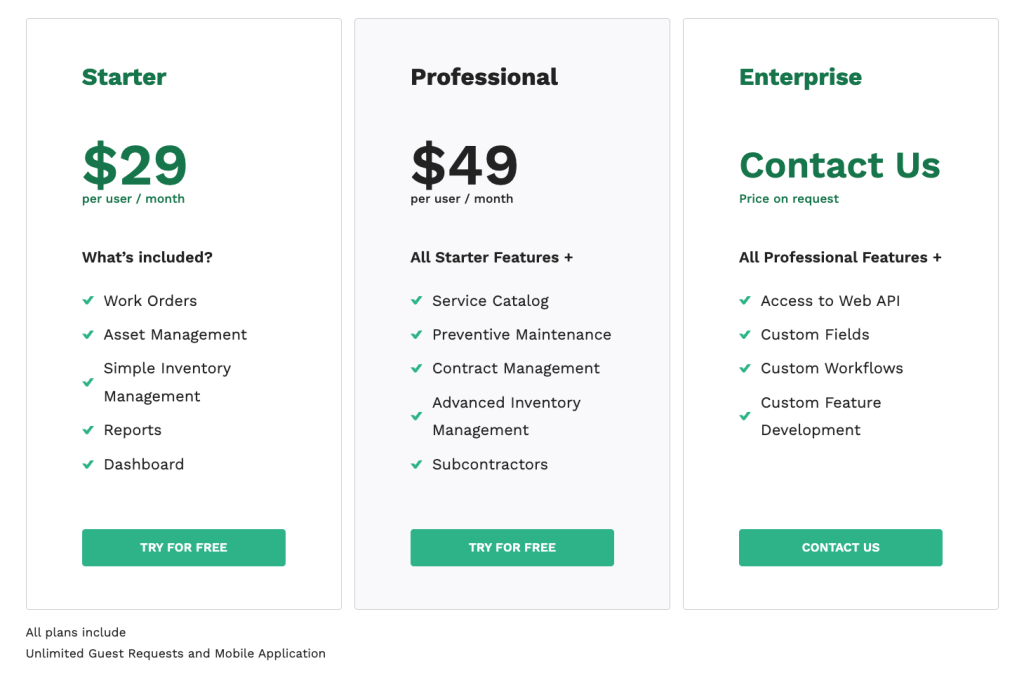
Data Management Excellence
WorkTrek centralizes all maintenance data on a single platform. This eliminates silos and ensures data integrity and quality. The system automatically tracks maintenance history, costs, and equipment performance metrics, creating the rich dataset needed for predictive analytics.
Friendly User Interface
Given the skills gap challenge, WorkTrek is designed for maintenance professionals, not data scientists. The intuitive interface enables technicians to easily log observations, access maintenance procedures, and respond to alerts.
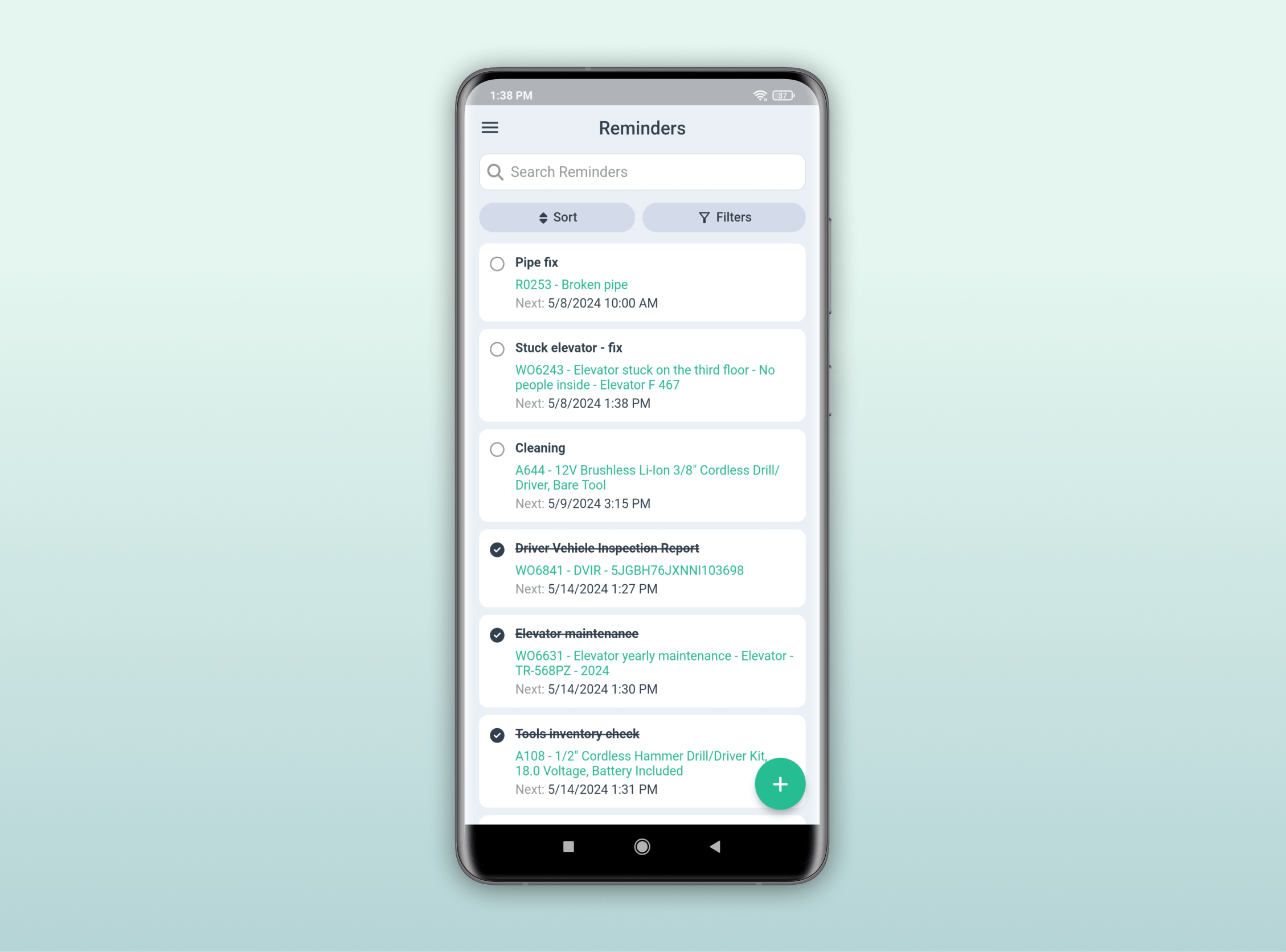
Change Management Support
WorkTrek’s mobile capabilities allow maintenance teams to access information and complete work orders from anywhere.
Enterprise Scalability
Whether managing a single facility or multiple locations, WorkTrek scales to meet your needs. Cloud-based architecture ensures the system can handle growing data volumes without performance degradation.
ROI Tracking
WorkTrek’s comprehensive reporting and analytics make it easy to track and demonstrate ROI. The system can automatically calculate maintenance costs, track downtime, and measure key performance indicators.
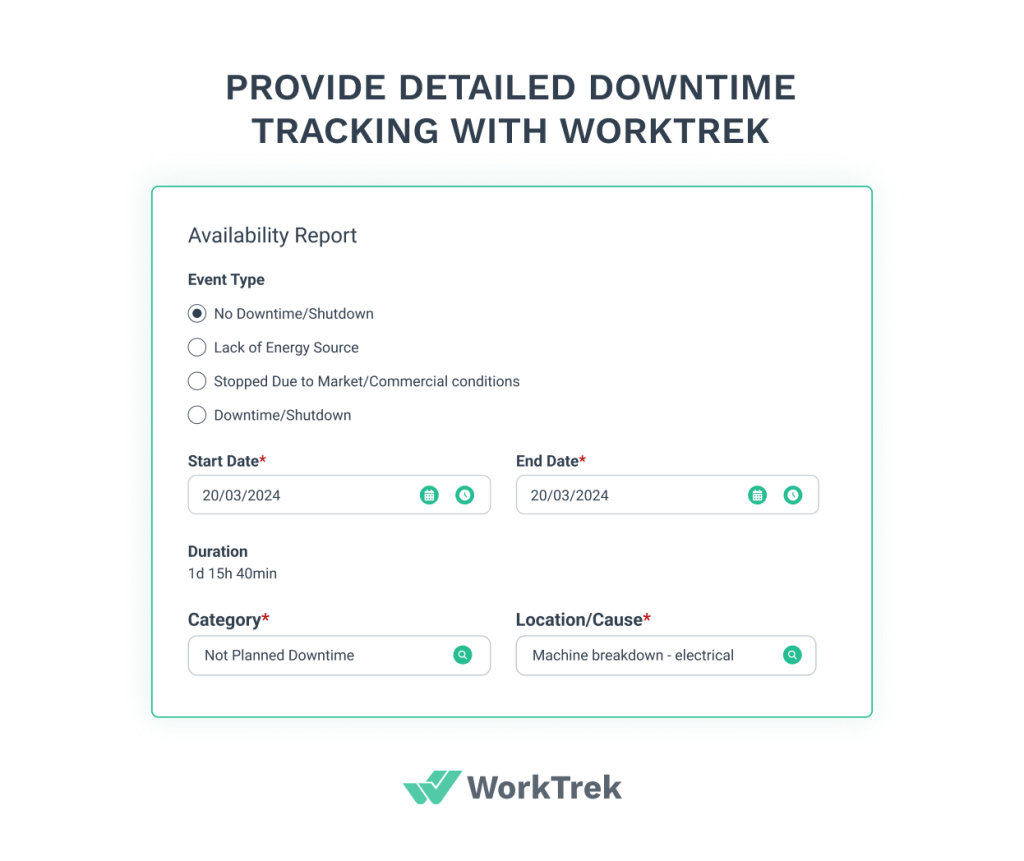
Security First
WorkTrek is built with enterprise-grade security features, including encryption, authentication, access controls, and audit trails. Regular security updates and compliance with industry standards provide peace of mind that your maintenance data is protected.

The Future of Predictive Maintenance
Despite challenges, the trajectory of predictive maintenance is clear.
As artificial intelligence and machine learning algorithms become more sophisticated, they enable more real-time analysis even in remote locations. Digital twins are creating virtual replicas of equipment that can simulate failures and test maintenance strategies.
Organizations that successfully navigate the implementation challenges will gain a significant competitive advantage.
Those who delay risk falling behind as predictive maintenance becomes the industry standard rather than a differentiator.
The key is to start now, even if it’s a small step. Build the data foundation, develop the skills, and create the culture that will support predictive maintenance.
Address the challenges systematically rather than hoping they’ll resolve themselves.
Conclusion
Implementing predictive maintenance is more than just installing sensors and running algorithms. It’s a complete transformation of how you do maintenance.
The seven challenges we’ve explored, high costs, data quality issues, skills gaps, resistance to change, scalability complexity, ROI demonstration, and cybersecurity concerns, are significant but surmountable.
The key to success is to acknowledge these challenges upfront and plan accordingly.
The path to predictive maintenance is a journey and not just a destination. Begin with a clear vision, but be prepared to iterate and adjust as needed.
Invest in the right technology foundation, like Worktrek CMMS, that can grow with your needs.
Most importantly, don’t let the challenges discourage you from pursuing the significant benefits that predictive maintenance can deliver.






